Brief History of Computer Games: 1978-1979
The first computer games
![]() By: E. Bolognesi
By: E. Bolognesi
Published: 14 September 2019, 5:19 pm
In this second chapter of the story, we'll see what happened in the two years following the release of the home computers.
After the year of the release of the first machines, home computer games started to be a reality in 1978. Still, initially, they were simple titles, inspired by the great classics like Checkers, Othello, Mastermind, or adaptation of famous videogames such as Breakout or Pong.
In reality, the primary publisher in 1978 was Creative Computing, the magazine for computer hobbyists founded in 1974 by David H. Ahl. The magazine started to publish BASIC games listings even before the year of the "Trinity". In 1978, David Ahl released the second edition of its book BASIC Computer Games, with 101 programs written in BASIC. This would become the first computer book to sell a million copies.
Those BASIC programs were probably the first games that computer owners played on their machines. As you probably already know, the most popular one was Super Star Trek. This was an enhanced version of the famous Star Trek text-only game initially created by Mike Mayfield, then improved by Bob Leedom, and finally re-published in 1978 on the Creative Computing book.
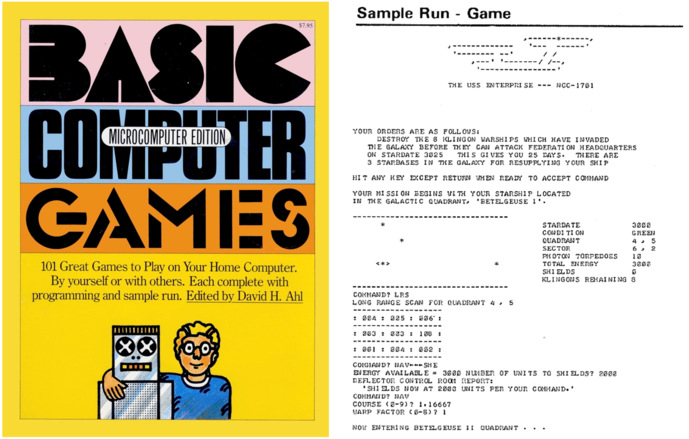
But all these games were not commercial titles.
One of the people who helped create the computer games business was Scott Adams, who released its first title, Adventureland, in December 1978. Adventureland, programmed in BASIC on a TRS-80, is the first text adventure created for a home computer. It was not very sophisticated; it only accepts 2 words commands, and the story is almost non-existent, but it was still remarkable.
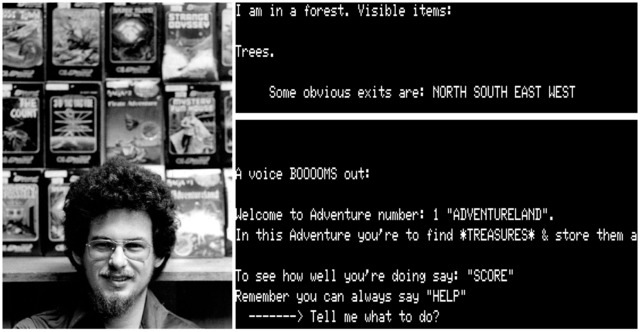
Most importantly, Adventure International, the company that Adams opened after the success of its first creature, is the first example of business based on computer games.
Adventure International was not alone. Some legendary companies were founded between 1978 and 1979: Automated Simulations (later renamed Epyx), Infocom, Strategic Simulations, and Activision.
Automated Simulations' first release, in 1979, would be Dunjonquest: Temple of Apshai, the first dungeon-crawling cRPG. Like Adventureland, it was written in BASIC.
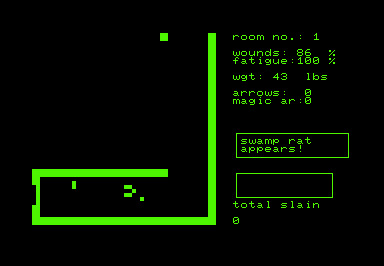
To make the game more portable, Jim Connelley designed an engine that could be used to create different games. The data of the dungeons were stored separately and could be reused on all the other platforms. In fact, Dunjonquest was released in 1979 for the PET and the TRS-80 - the Apple II version would be released one year later.
Another notable title released in 1979 is Flight Simulator I. Bruce Artwick, an engineering student and pilot, conceived the idea of a flight simulator for his thesis. After graduation, he founded his company, subLOGIC, and released the first Flight Simulator for the Apple II in 1979. It was one of the best-selling titles at the time, and Microsoft later purchased it.
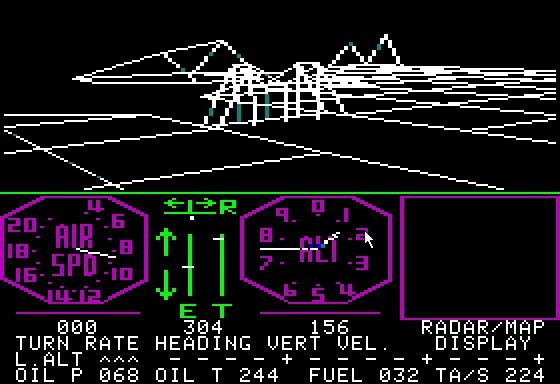
Opening a small parenthesis on the console side, it's worth mentioning that, between the end of 1979 and the beginning of 1980, Warren Robinett created Adventure for the Atari 2600. This title is famous for being the first action-adventure ever produced and the first game containing an easter egg (and for the movie Ready Player One).
Finally, at the end of 1979, Atari released the first computers of the 8-bit series - Atari 400 and Atari 800 - designed by a team that included Jay Miner, a guy that years later would help create the Amiga. These computers were much more advanced than the ones of the Trinity, but people didn't realize that immediately - and probably, never fully realized it.
I will talk more about the Atari 8-bit in the 1981 chapter, but for now, let's mention that to launch these computers, Atari engineer Doug Neubauer developed a first-person space combat simulator called Star Raiders. The game became a commercial success immediately.
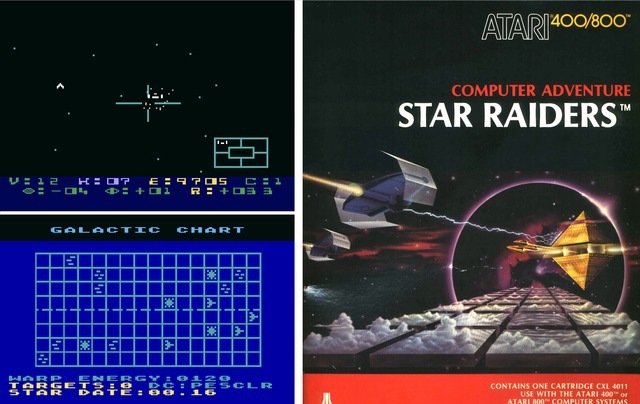
Try to play it, because you won't believe it's an 8-bit game created in 1979. Star Raiders is incredibly advanced, and it's also one of the most influential video games ever made. It inspired Wing Commander, Elite, and many other titles.
So, in the end, we haven't touched the '80s yet, but we already have text adventures, RPGs, flight simulators, space combat sims, and more. Not bad, considering this is just the beginning.
According to MobyGames, 329 games were released in total for the PET between 1977 and 1979. Almost the same for the TRS-80 and around 200 for the Apple II. It's difficult to say which platform was more influential during those initial years. It's probably a draw between the PET and the TRS-80. But the Apple II was destined to grow.
